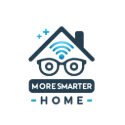Troubleshooting HomeKit Connectivity Issues
Title: Troubleshooting Common HomeKit Connectivity Issues
Are you tired of constantly having trouble connecting your HomeKit devices? Are you frustrated with the constant error messages and disconnections? Don’t worry, you’re not alone. Many users experience connectivity issues with their HomeKit devices, but luckily, there are solutions to these common problems. In this article, we will discuss the most common HomeKit connectivity issues and how to troubleshoot them.
- Check Your Wi-Fi Connection
The most common reason for HomeKit connectivity issues is a weak or unstable Wi-Fi connection. If your devices are not within a reasonable distance from your router, or if there are too many obstructions, it can affect the connectivity of your HomeKit devices. To check your Wi-Fi connection, try moving closer to the router or repositioning your router to a more central location in your home. You can also try resetting your router and modem to see if that improves the connection.
- Make Sure Your Devices are Updated
Another common reason for HomeKit connectivity issues is outdated firmware. Make sure that all of your HomeKit devices are running on the latest firmware. To check for updates, open the Home app and go to the “Software Update” section. If an update is available, follow the prompts to install it. Keeping your devices up to date will ensure a smoother and more stable connection.
- Restart Your Devices
If your devices are updated and your Wi-Fi connection is stable, but you are still experiencing connectivity issues, try restarting your devices. First, unplug your HomeKit hub (Apple TV, HomePod, or iPad) and then restart your Wi-Fi router. Once the router has restarted, plug the HomeKit hub back in and wait for it to reconnect to your Wi-Fi network. Then, restart all of your HomeKit devices. This process can resolve any connectivity issues caused by software glitches or conflicts.
- Use Strong and Unique Wi-Fi Passwords
One way to improve the security of your HomeKit network and prevent connectivity issues is by using strong and unique Wi-Fi passwords. If your password is too weak or easily guessable, it can put your network at risk and make it easier for others to gain access. This can cause connectivity issues or even allow unauthorized users to control your HomeKit devices. Make sure to use a combination of upper and lower case letters, numbers, and special characters in your password.
- Check Your HomeKit Hub
Your HomeKit hub (Apple TV, HomePod, or iPad) is essential for connecting all of your HomeKit devices. If your hub is experiencing issues or is not set up correctly, it can cause connectivity problems. To check your HomeKit hub, go to the Home app and click on the “Hubs” tab. If your hub is not connected or has connectivity issues, try restarting it or resetting it to factory settings and setting it up again.
- Use HomeKit-Compatible Devices
If you are experiencing connectivity issues with your HomeKit devices, it could be because they are not compatible with HomeKit. Make sure to only purchase devices that are marked as HomeKit-compatible. This will ensure that the devices are designed to work seamlessly with Apple’s smart home platform and will be less likely to experience compatibility issues.
- Avoid Overloading Your HomeKit Network
Your HomeKit network has a limit on the number of devices it can support, and overloading it can cause connectivity issues. If you are experiencing issues, try removing some devices from your network and see if that improves the connection. You can also try dividing your devices into different HomeKit homes to create smaller networks.
In conclusion, HomeKit connectivity issues can be frustrating, but with these troubleshooting tips, you can easily resolve them. Make sure to check your Wi-Fi connection, update your devices, restart them, use strong passwords, check your HomeKit hub, use HomeKit-compatible devices, and avoid overloading your network. By following these steps, you can enjoy a seamless and stable connection with your HomeKit devices. Happy home automating!
If you want to learn more about smart home automation and HomeKit, check out our other articles on moresmarterhome.com. With our expert tips and guides, you can create the ultimate smart home experience. Don’t forget to share your experience with us in the comments below.
Troubleshooting HomeKit Connectivity Issues Read More »




